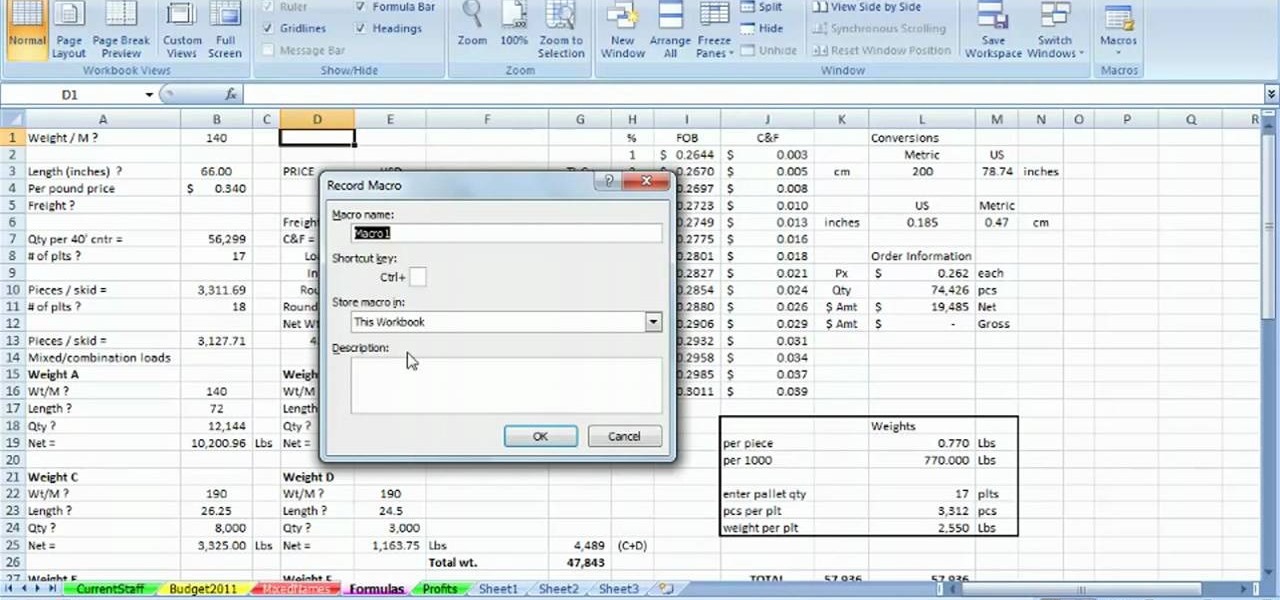

When done, click the Stop Recording button on the Developer tab.Īfter a macro has been created, you can run it in two ways: Step 4: Perform all of the actions that you want included in the macro. Select This Workbook if the current spreadsheet is the only one in which you plan to use the macro. If you want the macro to be accessible in any Excel file, choose Personal Macro Workbook. From the drop down box next to Store macro in, pick the workbook in which you want to store the macro. At this time, you can also assign a shortcut to the macro for later use. Step 3: In the Record Macro window, enter a name and description for the new macro. Note that the main Macros button can also be found on the View tab of the Excel ribbon, but the Developer tab contains more advanced macro tools so it’s worth the extra couple of moments it took to add it to the ribbon.


Step 2: Open the Developer tab, click the Record Macro button. The Developer tab will now be present on the ribbon. Put a check in the box next to Show Developer tab in the Ribbon.Ĭlick the OK button to return to Excel. In the Excel Options window, select Popular from the list of categories in the left hand panel. If it is not, you can add it by clicking on the Office button and then selecting Excel Options. Step 1: Make sure the Developer tab is shown on the Excel ribbon. In the steps below, we’ll show how easy it is to construct a standard macro in Excel. However, it is possible to create a custom macro that will execute such a sequence of commands on your behalf with just one click of a button.
MICROSOFT EXCEL 2007 TUTORIAL MACROS SERIES
While there are a number of features and tools in Excel 2007 that can be used to optimize and speed up workflow, there are still series of tasks and commands that many users will find very repetitive and time consuming.


 0 kommentar(er)
0 kommentar(er)
